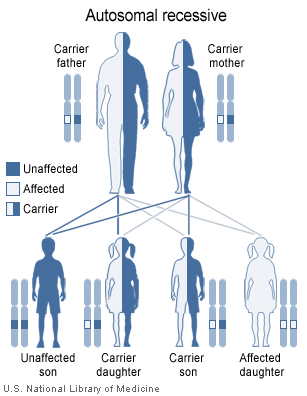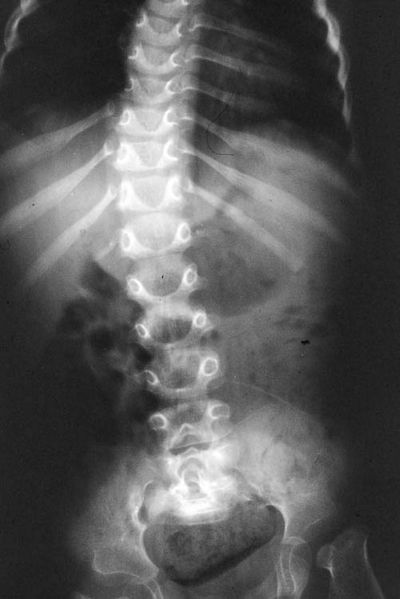Diastrophic dysplasia
| Diastrophic dysplasia | |
| OMIM | 222600 |
|---|---|
| DiseasesDB | 30759 |
Editor-In-Chief: C. Michael Gibson, M.S., M.D. [1]
Overview
Diastrophic dysplasia (DTD) is an autosomal recessive[1] congenital disorder which affects cartilage and bone development.
Affected individuals have short stature with very short arms and legs and joint problems that restrict mobility.
Symptoms
This condition is also characterized by an inward- and downward-turning foot (called clubfoot), progressive curvature of the spine, and unusually positioned thumbs (hitchhiker thumbs). About half of infants with diastrophic dysplasia are born with an opening in the roof of the mouth called a cleft palate. Swelling of the external ears is also common in newborns and can lead to thickened, deformed ears.
The signs and symptoms of diastrophic dysplasia are similar to those of another skeletal disorder called atelosteogenesis, type 2. Diastrophic dysplasia tends to be less severe, however.
Genetic prevalence

Diastrophic dysplasia affects about 1 in 100,000 births. Mutations in the SLC26A2 gene cause diastrophic dysplasia, and it is one of a spectrum of skeletal disorders caused by mutations in the SLC26A2 gene. The protein made by this gene is essential for the normal development of cartilage and for its conversion to bone. Cartilage is a tough, flexible tissue that makes up much of the skeleton during early development. Most cartilage is later converted to bone, but in adulthood this tissue continues to cover and protect the ends of bones and is present in the nose and external ears. Mutations in the SLC26A2 gene alter the structure of developing cartilage, preventing bones from forming properly and resulting in the skeletal problems characteristic of diastrophic dysplasia.
This condition is an autosomal recessive disorder, which means the defective gene is located on an autosome, and both parents must carry one copy of the defective gene in order to have a child born with the disorder. The parents of a child with an autosomal recessive disorder are usually not affected by the disorder.
Diagnosis
See also
External links
This article incorporates some public domain text from The U.S. National Library of Medicine
References
Template:Osteochondrodysplasia
Template:WH Template:WS {jb1}}

